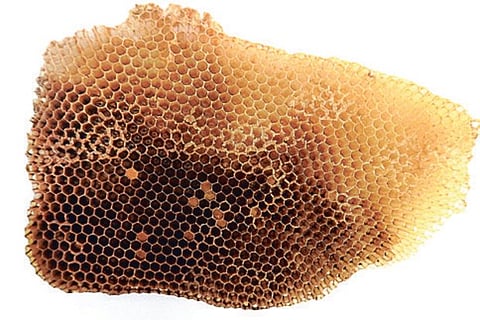

Chennai
“After catching the infection, the honeycombs that are usually yellow turn black. Besides, eggs and larvae die and the existing colony of bees in the nest boxes migrate, causing severe economic loss to the honey producers,” said Davidson Sargunam, member of IUCN for Ecosystem Management, Nagercoil. Citing its advantages, he said honey bees are important pollinators of agri crops and the drastic loss of honey bee colonies have attracted great concern among honey producers. Potential contributors to such losses could be pesticide exposure, lack of floral resources, parasites and pathogens. The damaging effects of all of these might be exacerbated by improper apiculture practices.
Referring to its swarming characteristics, he said all honeybees are social insects and live together in nests or hives. The honeybee is remarkable for the dancing movements it performs in the hive to communicate information to its fellow bees about the location, distance, size, and quality of a particular food source in the surrounding area.
On its economic productivity, Davidson told DT Next on Sunday that beekeeping is a critical component of modern agriculture and the State Horticulture Department has been providing honey bee nests with bees to potential farmers and indigenous people. The current infection threatens the beekeeping operations, which provide pollination service to farmers and honey production as a non-farming activity and crippling the production of the umpteen crops that are dependent on honeybees for pollination. It was during 1924, Dr Spencer Hatch, a fraternal secretary from North America, while heading the YMCA rural centres, Marthandam, found the existence of bees at villages and in the hilly areas of South Travancore and introduced it among the poor villagers around Marthandam as one of the self-employment programmes. ‘“As of now, over 10,000 people rely on beekeeping and more than 25,000 people in Kanniyakumari secure jobs by this horticulture-oriented industry,” he pointed out.
Visit news.dtnext.in to explore our interactive epaper!
Download the DT Next app for more exciting features!
Click here for iOS
Click here for Android